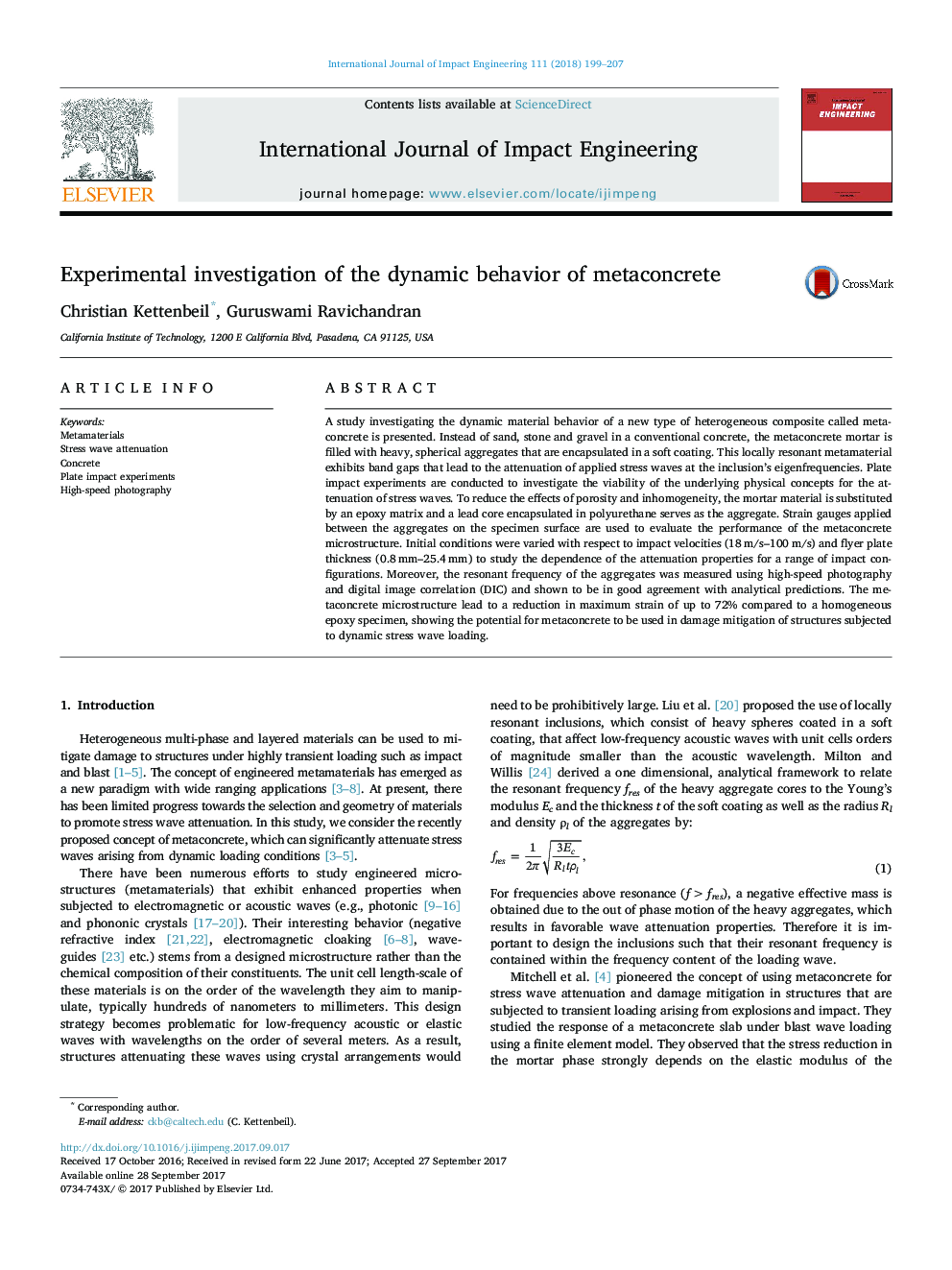| Article ID | Journal | Published Year | Pages | File Type |
|---|---|---|---|---|
| 5015409 | International Journal of Impact Engineering | 2018 | 9 Pages |
â¢Impact experiments are conducted on locally resonant metamaterial.â¢Stress waves are attenuated by up to 72% after only 3 inclusions.â¢Observed resonant frequency of aggregates is predicted by a simple 1-D model.â¢Frequency spectra of strain gauge signals provide accurate prediction of bandgap.
A study investigating the dynamic material behavior of a new type of heterogeneous composite called metaconcrete is presented. Instead of sand, stone and gravel in a conventional concrete, the metaconcrete mortar is filled with heavy, spherical aggregates that are encapsulated in a soft coating. This locally resonant metamaterial exhibits band gaps that lead to the attenuation of applied stress waves at the inclusion's eigenfrequencies. Plate impact experiments are conducted to investigate the viability of the underlying physical concepts for the attenuation of stress waves. To reduce the effects of porosity and inhomogeneity, the mortar material is substituted by an epoxy matrix and a lead core encapsulated in polyurethane serves as the aggregate. Strain gauges applied between the aggregates on the specimen surface are used to evaluate the performance of the metaconcrete microstructure. Initial conditions were varied with respect to impact velocities (18â¯m/s-100â¯m/s) and flyer plate thickness (0.8â¯mm-25.4â¯mm) to study the dependence of the attenuation properties for a range of impact configurations. Moreover, the resonant frequency of the aggregates was measured using high-speed photography and digital image correlation (DIC) and shown to be in good agreement with analytical predictions. The metaconcrete microstructure lead to a reduction in maximum strain of up to 72% compared to a homogeneous epoxy specimen, showing the potential for metaconcrete to be used in damage mitigation of structures subjected to dynamic stress wave loading.
